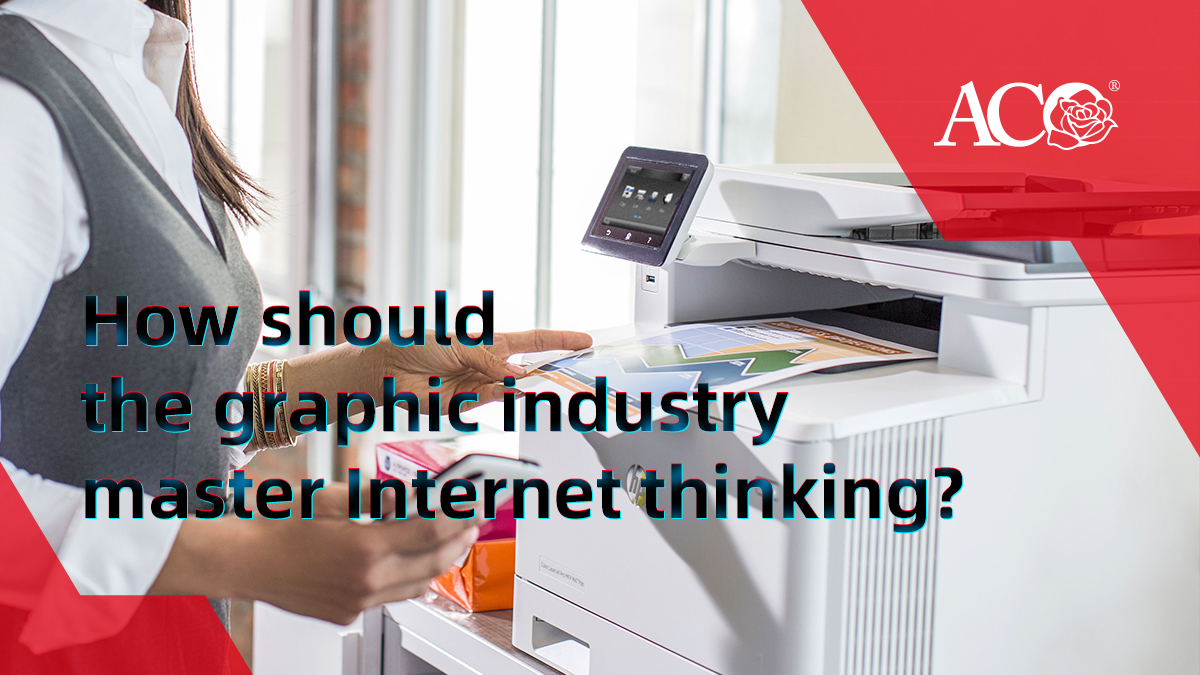An epidemic at the beginning of this year directly promoted the development of "online business" of thousands of companies.
In the past, when we did offline, we might be pulling the printer to the graphic store, and explaining the advantages and selling points of the machine face to face with the graphic store users. Although this gives the user a more intuitive experience, the disadvantages are also obvious:

1. It requires a lot of manpower, material resources and financial resources, and the cost is high;
2. The user coverage is narrow;
3. Long project cycle.
These shortcomings can be remedied online.
If graphics and text are also to be used for online business, the plan needs to be constructed with "Internet thinking".
What is Internet thinking?
To put it simply, Internet thinking is to put people at the center, constantly expanding relationships and forming a strong network of relationships. Through the establishment of this layer of relationship network, the valuable things are transferred to each other. This "valuable thing" can be services, products, and resources, which can then consolidate the network and establish a huge Internet ecology.
There are two suggestions for building Internet thinking.
1. Break the "information cocoon room"
When we usually use Douyin, Kuaishou or Toutiao, we may notice one thing: If we continue to watch or agree with a type of work, the content that the platform will push to us in the future will be more biased towards this type.
This situation is mainly "attributable" to the algorithms and big data of Internet companies, and the impact on us is that over time, we may fall into the vicious circle of "information cocoon". The information cocoon effect refers to the fact that in the dissemination of information on the Internet, users are more inclined to pay attention to the areas they are originally interested in. Over time, we will be confined to the "cocoon house" built by ourselves, resulting in information blockage and reduced social stickiness, which is not conducive to the formation of the overall view.
Therefore, in order to break the information cocoon, we must first be critical of the views we have received: In communicating with people, we must not only state the views, but also explain the reasons as much as possible.
If you encounter remarks that contradict your previous point of view, don't rush to refute it, and think about the underlying reasons why the other party said so. When necessary, quote first-party information and authoritative data (such as industry public prospectus).
If we cannot seek common ground while reserving differences, we cannot have our own "Internet thinking".
2. Master "precise search"
In the process of transferring valuable things to each other, our role can be the active transmitter or the active receiver.
On the Internet, as long as there are channels, theoretically we can find any information we need.
However, for users who are accustomed to offline, when they first started online, the way to obtain information may be relatively simple, and the commonly used search engines may be Baidu and Sogou. It is easy to use these common engines to search for some common problems of the general public, such as how to treat oral ulcers.
But if we are looking for some professional and accurate information, they may not be easy to use, such as the role of an accessory on the HP Designjet T650 printer, the development prospects of graphic and text related industries, and the basic information of the users we are responsible for Wait.
Of course, if we want to master the "Internet thinking", it is not enough to search and crack the information cocoon accurately. This is a gradual process that requires us to constantly try and make mistakes, accumulate experience, summarize and analyze, and use new ideas. Experience guides us in the next step.
